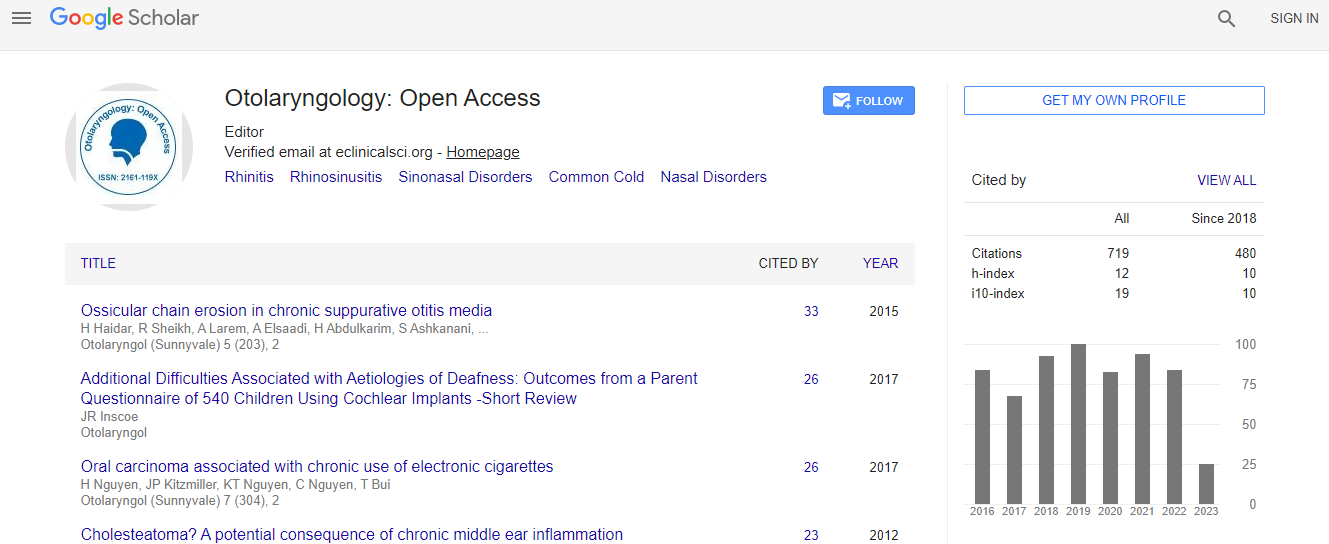Our Group organises 3000+ Global Conferenceseries Events every year across USA, Europe & Asia with support from 1000 more scientific Societies and Publishes 700+ Open Access Journals which contains over 50000 eminent personalities, reputed scientists as editorial board members.
Open Access Journals gaining more Readers and Citations
700 Journals and 15,000,000 Readers Each Journal is getting 25,000+ Readers
Google Scholar citation report
Citations : 925
Otolaryngology: Open Access received 925 citations as per Google Scholar report
Otolaryngology: Open Access peer review process verified at publons
Indexed In
- Index Copernicus
- Google Scholar
- Sherpa Romeo
- Open J Gate
- Genamics JournalSeek
- RefSeek
- Hamdard University
- EBSCO A-Z
- OCLC- WorldCat
- Publons
- Geneva Foundation for Medical Education and Research
- ICMJE
Useful Links
Recommended Journals
Related Subjects
Share This Page
Management of erythema and flushing in patients with erythematotelangiectatic rosacea
International Conference on Aesthetic Medicine and ENT
Jeffery Lim
Aesthetic Medicine Academy Asia, Malaysia
ScientificTracks Abstracts: Otolaryngology
Abstract
Rosacea is a chronic inflammatory skin disorder which may present with transient or persistent erythema, telangiectasia, inflammatory papules and pustules, phymatous changes and/or have ocular involvement (e.g., blepharitis, keratitis, episcleritis, conjunctivitis). Patients may also report a burning or stinging sensation over the affected areas. The condition may be aggravated by the consumption of spicy food, hot food/drinks, alcohol consumption, use of topical/oral corticosteroids, exposure to heat (saunas, hot sun) or physical activities such as exercise. Patients with the erythematotelangiectatic variant of rosacea often seek treatment for persistent erythema, increased sensitivity to cosmetics and topical products as well as pain and discomfort. While there have been no single effective treatment for rosacea, there exists numerous options for treatment. The objective of this presentation is to identify effective options to manage persistent or recalcitrant erythema in patients with rosacea. Treatment options include topical therapy, oral medication, intradermal injectable therapy and laser & light treatments. Topical therapy options that may be beneficial include topical metronidazole 1% gel, azelaic acid 20% cream, permethrin 5% cream, ivermectin 1% cream, brimonidine tartrate 0.33% gel and oxymetazoline hydrochloride 1% cream. Oral medications that have been prescribed include tetracyclines, metronidazole, isotretinoin, clonidine, beta blockers (e.g., carvedilol), ondansetron, naloxone and selective serotonin re-uptake inhibitors (SSRIs). Intradermal botulinum toxin A has been reported to be helpful in reducing erythema associated with rosacea. Intense pulsed light, copper bromide laser, pulsed dye laser or long pulsed Nd:YAG laser may be considered in recalcitrant cases.Biography
Email: thelimster@gmail.com

 Spanish
Spanish  Chinese
Chinese  Russian
Russian  German
German  French
French  Japanese
Japanese  Portuguese
Portuguese  Hindi
Hindi 
